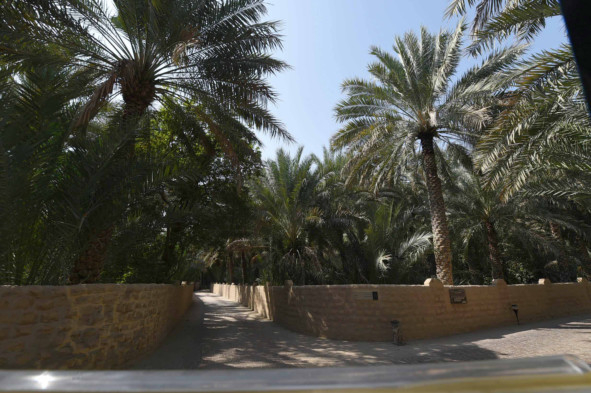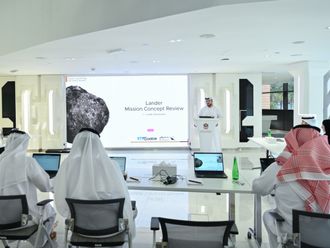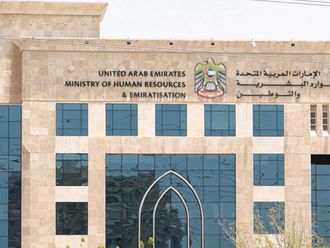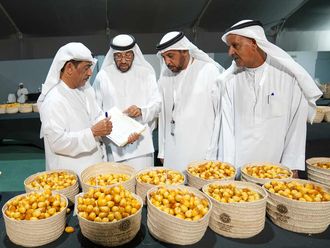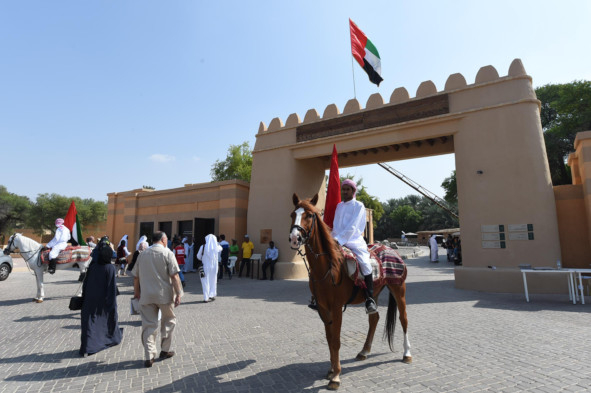
Abu Dhabi: Al Ain Oasis, the UAE’s first Unesco World Heritage Site that opened to the public on November 3, tells a riveting human story of how life sustained in the harsh desert environment thousands of years ago.
Through interactive screens and miniature models, the heritage site offers an immersive experience to visitors into the ingenuity of the local community that relied on a complex eco-system sustained by a traditional water management and cultivation system called Al Falaj.
Situated in the heart of the ancient city, Al Ain Oasis is one of the world’s oldest permanently inhabited settlements that dates back more than 2,000 years. It covers over 1,200 hectares and contains more than 147,000 date palm trees, of up to 100 varieties.
Adjacent to Al Ain National Museum to the East and Al Ain Palace Museum to the West, the oasis is known for its unique Al Falaj irrigation system of narrow waterways that conveys fresh spring water from the nearby Hajjar Mountains to nurture the date farms.
Curated activities
The site features a full programme of curated activities and exhibitions for the public that provide an enhanced and culturally enriched experience for visitors and residents.
The tour starts at the Oasis Garden that embodies three-tiered agriculture comprising ground crops, orchards and palm groves.
The Eco-Centre next to it is a thoughtfully designed ‘green’ building meant to reflect the organic composition of plots within the oasis. With its central cladding that mimics interlocking palm branches and its use of eco-friendly materials, it provides a fully immersive experience with didactic installations and educational games, sharing the story of the genesis of the desert oasis.
The natural beauty visible across Al Ain can be experienced from Nagfa Ridge Viewpoint metaphor in the Miniature Oasis, revealing an inspiring desert environment that captures the authentic integrity of the Unesco World Heritage Site.
This experience is completed by the West Gate Exhibition, where the ancient traditions associated with water are shown as a projection into the flowing waters of a Shari’a cistern.
A selection of food and beverage outlets can be enjoyed along the nearby Al Ain Oasis Plaza where local produce and traditional products from the oasis can be purchased. The minimalistic plaza buildings are meant to blend into the oasis landscape.
Hamdan Al Rashdi, archaeologist for the Abu Dhabi Tourism and Culture Authority (TCA) that has undertaken the interpretation of the Al Ain Oasis, said the heritage site is a gate from the past to the future. “This is one of the oldest landscapes and it helps us understand the thought and techniques a community used to survive in the harsh climatic conditions. It teaches us immense lessons on how to sustain our future,” said Rashdi. The TCA official said they have improved Al Ain Oasis visitor experience and accessibility by introducing interpretive tools to better understand the oasis’ ecosystem, its historic evolution, and its significance for the rest of the World Heritage Site of Al Ain.
Al Ain Oasis is open daily from 9am to 6pm, with the restaurants, cafes and shops remaining open until 9pm.



